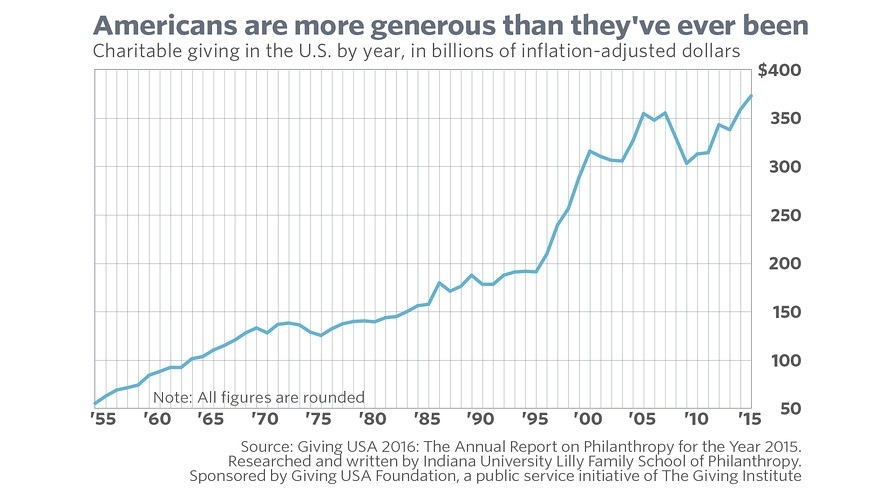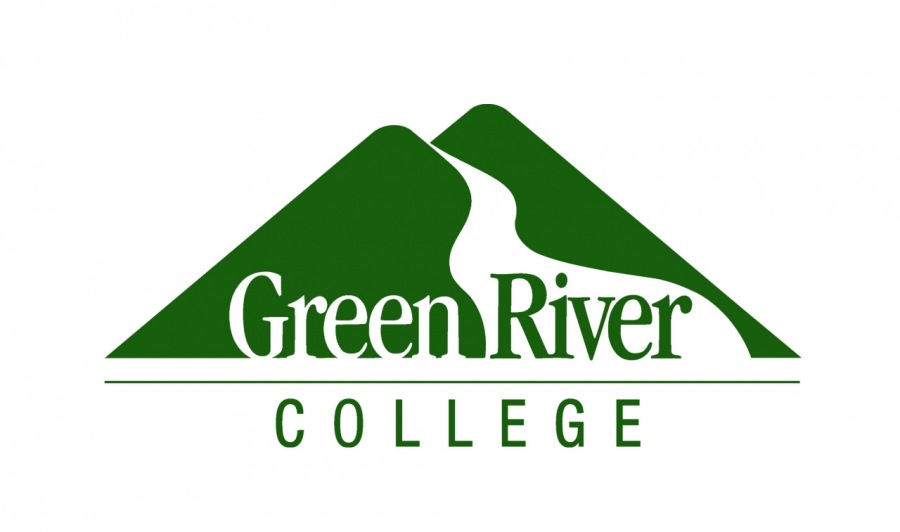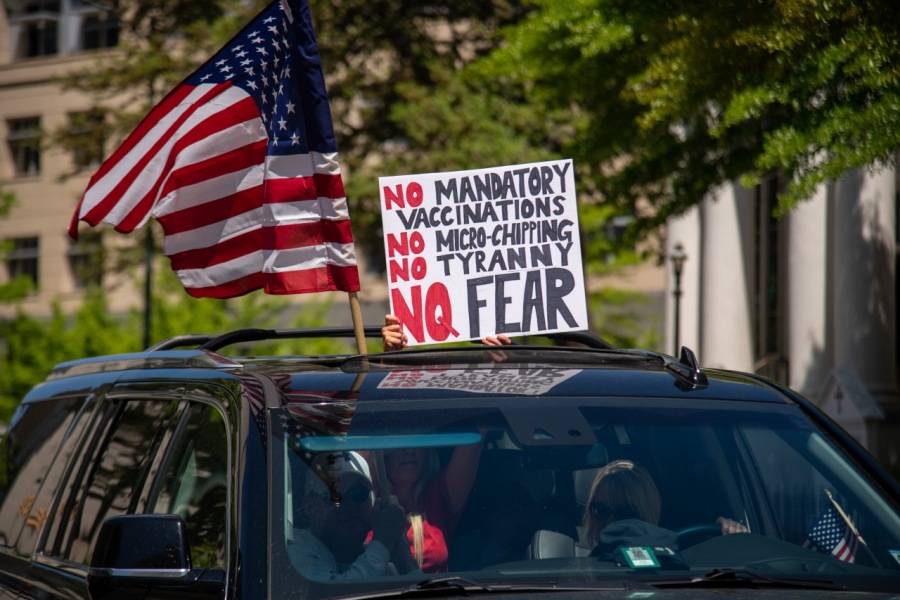What? A Value Proposition for Non-Profits?
Note: Value propositions are essential for any company; why not non-profit corporations? Here are two case histories of recent nonprofit clients that needed some help with that. Enjoy! Previous installments of my weekly blog can be found on my website at http://stevemarshallassociates.com/steves-blog/
A Little Background

Of course, one reason total giving went up is that the U.S. population almost doubled. But if we recalculate inflation-adjusted charitable giving on a per capita basis, we see that has also soared: by 3.5 times! (Source - Philanthropy Roundtable - http://www.philanthropyroundtable.org/almanac/statistics/)
Set the Wayback Machine, Sherman!
In 1978, my first professional job was as the Director of Business Development and the Foundation for a community

At that time, as it is now, most donations come from individuals who have disposable income - historically most people start giving gifts in their early 40's - and by comparison to today's giving environment, if you asked someone for a gift, you probably got one. I credit this to a number of factors, but here are a couple of biggies; there were far fewer nonprofits, and there was more institutional trust in companies and organizations. (NOTE: Today, just asking doesn't necessarily get you a gift, but it's a good start!)
All of the above serves as a backdrop for the subject of this article; i.e., the value proposition for a nonprofit; ergo, their mission statement. Because of the nature of the beast - a community college - we had to create a value proposition since alumnae attending a community college in 1978 weren't there for acquiring socialization skills; they were there to learn a trade like welding or carpentry, or a degree in something like accounting or drafting. Minus the nostalgia of a shared experience gained in the traditional halls of higher education we couldn't count on alum's for support nor could we look toward corporations or foundations for funding - community colleges in Washington State were entirely funded by legislative action tied to the taxes that residents paid to the state treasury.
Who Was Left?
The only body of people remaining to look to for support was the residents of the local community; about 30,000 good people who lived there because it was a bedroom community of Seattle just 25 miles away and the Boeing Company,
employing 80,000 workers, was even closer. Once an agricultural town, urban sprawl had made land much too valuable for that endeavor and so houses were being built like crazy on what used to be vast cornfields. What was missing in this transition from an agrarian environment to a city was an identity and pride of place.
The college foundation convened the first of several meetings with city government departments to form a partnership between the two entities to surface common issues and solutions provided in some cases by - you guessed it - the community college! Over the several years I was there, we were very successful in bringing the city together with the college by making the college a valuable community asset as well as an essential partner with the city. (How we did that could be the subject of another post. Here'a hint, though; think about philanthropy as the vehicle for funding the margin of excellence!)
To the Point
In the past several months I was involved with two separate nonprofits desiring to support their expansion plans through philanthropic investment. Here are the scenarios and results as follows:
Client A
Client A wisely undertook a planning study to ask their most valuable customers if they would assist in supporting their expansion plans. The result was telling - all of the major potential investors could not ascertain the substance of their value proposition! In this particular situation, the value proposition was actually present, but the client had not realized how important this was in today's charitable fundraising market, so it had never been communicated by the client to their customers.
In 1978 this client would have most likely succeeded in raising the money they desired because the underlying message

Client B
This client, a university, also commissioned us to do a planning study with a similar audience to Client A's, but their value proposition was some 20-30 years out-of-date. Their message to their constituency was, in essence, "Give us money because we need it." What made this even a harder sell was that they were surrounded by 100+ other universities essentially asking the same customers for the same thing. Looking at the Venn Diagram, what was missing for Client B was a lack of understanding of themselves and clarity of all three of the critical circles in the diagram, and as a result, they could not iterate their value proposition clearly to their customer base. Our recommendation to them was to:
- Review their mission statement (value proposition) and update it to more clearly differentiate themselves from the other 100+ marketplace offerings, research who their primary customers were, and what their customers needed in comparison to what they were offering;
- Then, review the plan we discussed with their investors, take the time to thoughtfully craft a more relevant plan in line with their new value proposition; and,
- Start the process of preparing to go back to their constituencies at a later date.
Trends
Modern-day nonprofits looking to raise millions (or billions) should be looking for wealthy philanthropic investors to partner with them to solve common issues and challenges versus looking for a handout. Collaboration and partnering are two very key words in today's philanthropic arena, as donors are demanding more efficiency and less duplication of effort from the 1.7 million non-profits in America.
The Answer to the Question?
Hopefully, you can now respond to the primary question asked by this post with a resounding YES! Nonprofits need a stronger value proposition more than ever; the competition for the charitable dollar in 2017 is fierce and (most) major donors do not make giving decisions based primarily on emotion as many of them once did. Rather, they look at it much like they would for any investment; what's the R.O.I.; in other words, if I give $100,000, what can the nonprofit do with that money to multiply it to $1,000,000 in programs and services for the populations which they serve?
""""
Articles from Steven Marshall
View blog
NOTE: The Brookings Institution in Washington, D.C. recently completed a study on how people in this ...

Note: I recently met a gentleman named Carl Dierschow, who owns/runs a consulting company called "Sm ...

Note: Do you know what is the worst part of working in an office? Working with people you don't like ...
You may be interested in these jobs
-

Wedding catering companies
Found in: Handyman CS US - 56 minutes ago
Direct apply
beBee Handyman Chester, TX, United States FreelanceI am in need of a catering service in Chester, TX with the following characteristics:Event type · Wedding · Type of food and/or drinks · Full menu (appetizers, 1st course, 2nd course, and desserts), non-alcoholic beverages, alcoholic beverages · Estimated number of guests · More ...
-
Sales Account Executive, New Business
Found in: Lensa US 4 C2 - 1 day ago
Automation Anywhere Atlanta, United States**About Us:** · Automation Anywhere is the leader in intelligent automation solutions that put AI to work across every aspect of an organization. The company's Automation Success Platform is infused with generative AI and offers process discovery, RPA, end-to-end process orchestr ...
-
Registered Dietitian for Assisted Living Communities
Found in: Lensa US P 2 C2 - 5 days ago
Crandall Corporate Dietitians Manteca, United StatesRegistered DietitianAssisted Living CommunitiesDo you enjoy working with residents in senior living communities? Then this consulting opportunity is a perfect fit for you. Join our supportive and amazing team We are looking for a positive and self-motivated consulting dietitian. ...


Comments